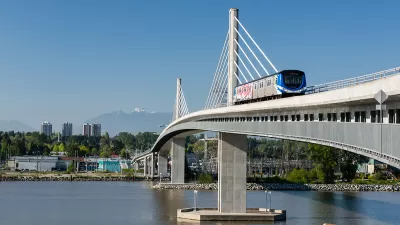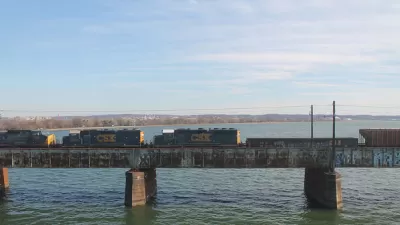City staff recently released revised first-day ridership projections for a proposed subway in Vancouver. The numbers seem astronomical and a strong support for the cause. But can the project get the finding it needs?

Sunny Dhillon reports on Vancouver Mayor Gregor Robertson's case in support of the city's Broadway Subway." According to new data compipled by city staff and touted by the mayor, "a subway along Vancouver’s Broadway corridor would have 250,000 trips on its first day." Mayor Robertson is currently running for re-election, has stated publicly that the completion of the subway line is his top priority.
"Previous data had suggested a Broadway subway could expect 125,000 trips on its first day – half of what Mr. Robertson said is now projected. He said the 250,000 subway trips would outpace the figures for either a new Massey Tunnel Bridge or the Port Mann Bridge. The mayor said building the subway would also cut the number of car trips along Broadway by 50,000, reducing congestion and improving air quality."
As for the subway route's preliminary plans: "The subway would stretch from Commercial and Broadway to the University of British Columbia. The university and city last year released a study, conducted by KPMG, that said rail-based rapid transit is necessary to meet the corridor’s anticipated population growth and economic potential."
And as for funding—potential funding rides on the fortunes of a forthcoming public referendum on transit spending in British Columbia.
FULL STORY: Projected demand for Vancouver's Broadway subway sees 250,000 trips on first day

Trump Administration Could Effectively End Housing Voucher Program
Federal officials are eyeing major cuts to the Section 8 program that helps millions of low-income households pay rent.

Planetizen Federal Action Tracker
A weekly monitor of how Trump’s orders and actions are impacting planners and planning in America.

Ken Jennings Launches Transit Web Series
The Jeopardy champ wants you to ride public transit.

California Invests Additional $5M in Electric School Buses
The state wants to electrify all of its school bus fleets by 2035.

Austin Launches $2M Homelessness Prevention Fund
A new grant program from the city’s Homeless Strategy Office will fund rental assistance and supportive services.

Alabama School Forestry Initiative Brings Trees to Schoolyards
Trees can improve physical and mental health for students and commnity members.
Urban Design for Planners 1: Software Tools
This six-course series explores essential urban design concepts using open source software and equips planners with the tools they need to participate fully in the urban design process.
Planning for Universal Design
Learn the tools for implementing Universal Design in planning regulations.
Ada County Highway District
Clanton & Associates, Inc.
Jessamine County Fiscal Court
Institute for Housing and Urban Development Studies (IHS)
City of Grandview
Harvard GSD Executive Education
Toledo-Lucas County Plan Commissions
Salt Lake City
NYU Wagner Graduate School of Public Service




























